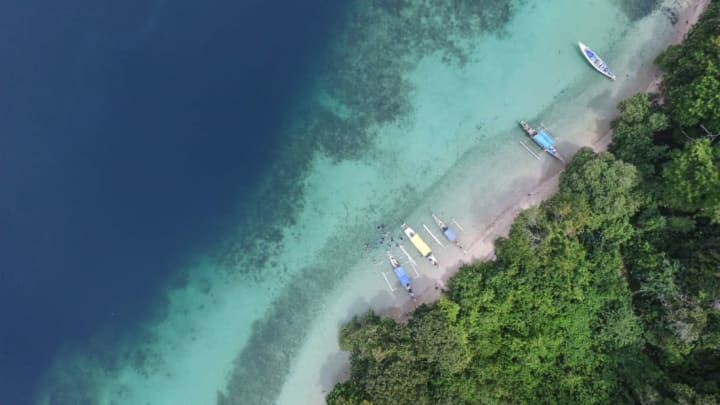As many as 18,000 new species are discovered each year, very few of which are birds. Birds as a group are highly studied, and only 161 new bird species were identified between 1990 and 2019. So when 10 new species and subspecies of songbirds were recently found on a remote trio of islands in Indonesia, it showed that there's a lot more to learn about the ancient class of animals.
Lead researcher Frank Rheindt, an evolutionary biologist at the National University of Singapore, and his colleagues describe their findings in a new study published in the journal Science. During a six-week expedition through the islands of Taliabu, Peleng, and Batudaka in Indonesia's Wallacean island chain, the research team documented five previously unknown songbird species and five subspecies. It's the first time in over a century that so many new bird species have been identified in such a small, isolated environment.
All 10 of the new birds in the study are small songbirds. Some, like the Taliabu Myzomela, with its bright scarlet head and belly, have colorful plumage. Others were noted for their distinct vocalizations; describing the Peleng Fantail, the study authors wrote, "When we first found the species in the field, the bird stood out through its unusual, simple descending song that lacks the typical complex tinkling quality of [similar species]."
"It is remarkable that—even for birds, which are the best-known animal group on Earth—there is still a place that yields so many new species and subspecies," Rheindt tells Mental Floss.
The region has long been known for its biodiversity. It's where Alfred Russel Wallace—the British naturalist for whom the island chain is named—gathered the data that helped him develop his theory of evolution in the 19th century. Today, the islands are thought to host 2 percent of all the world's bird species.
Despite its reputation, the Wallacean archipelago is under-explored. When planning their expedition, the researchers used bathymetry, or the study of sea depth, to locate the islands that had the deepest waters surrounding them, and therefore had been isolated from other landmasses for the longest amounts of time. "This geographic isolation—coupled with the fact that these islands had been largely neglected by historic collectors such as Alfred Russel Wallace—made us suspect that they may harbor a number of undiscovered endemic species that are unique to these islands and not shared with anywhere else in the world," Rheindt says.
The team's success suggests that similar remote regions around the world could be hotbeds of undiscovered biodiversity waiting to be studied.
There are roughly 11,000 bird species currently recognized by biologists, but it's estimated that there are thousands more that haven't been identified. As climate change and other threats related to human activity have caused the disappearance of 3 billion birds in North America alone, documenting and understanding new species while they're still around is more important than ever.
"In this era of environmental crisis, we need a resurgence in biodiversity discovery," Rheindt says. "How will we know what to save if we don’t even know what biodiversity is out there? Which islands hold high degrees of endemic species not shared with any other place on Earth? Which islands are less special, because most of their species are not unique? Only a renaissance of biodiversity rediscovery will enable us to make smart decisions when it comes to directing our limited conservation resources to the right places on Earth."
